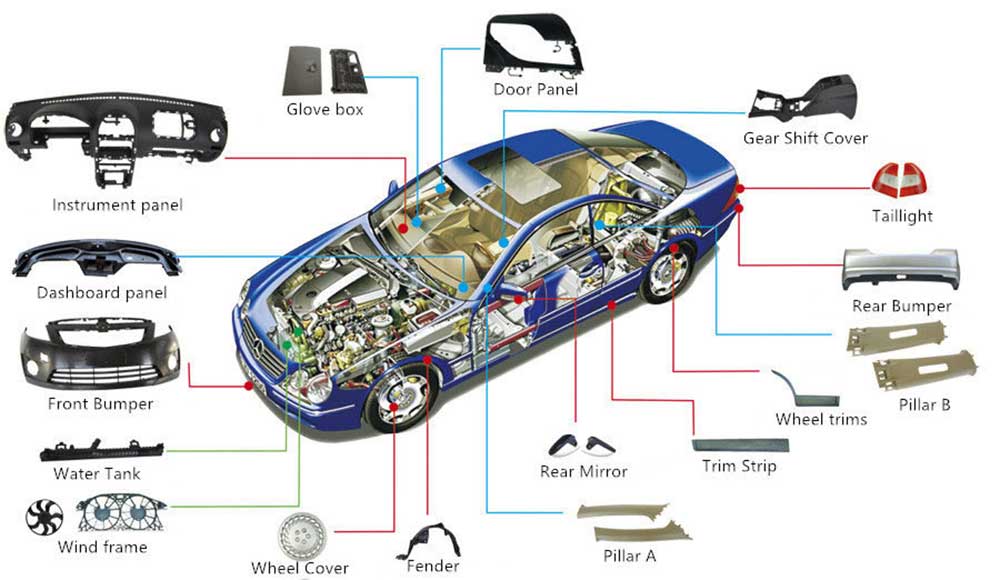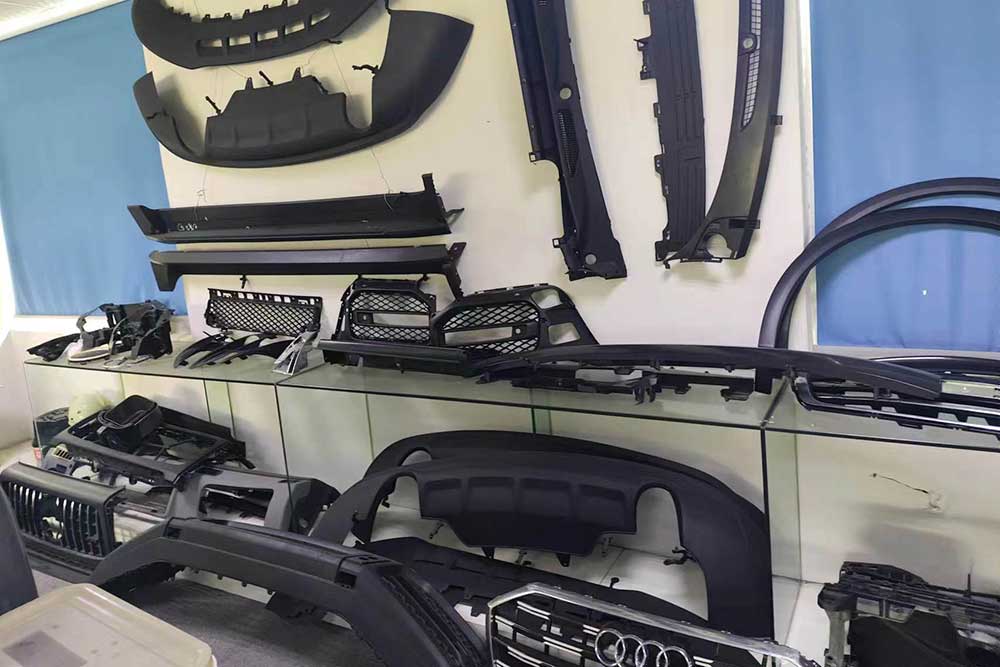Automotive Injection Molding Solutions: Comprehensive Guide for Manufacturers
Introduction :
The automotive industry has embraced plastic injection molding solutions as a vital method for producing high-performance, cost-effective parts. In this article, we explore the history, advantages, applications, alternative solutions, and materials associated with automotive injection molding solutions. Keep reading to gain valuable insights and discover how this method can improve your manufacturing process.
The History of Automotive Injection Molding Solutions
In the early development stages of the automotive industry, vehicles were constructed primarily from metal, making them heavy and costly. The rise of the plastic market in the 1940s and 1950s led to the introduction of plastic automotive parts. By the 1970s, manufacturers had integrated plastic decorative elements into car designs. By the late 1980s, essential functional components such as bumpers, headlights, and fenders were produced using plastic injection molding. Today, automotive injection molding solutions have become the primary method for producing plastic car parts.

Advantages of Automotive Injection Molding Solutions
Automotive injection molding solutions offer numerous benefits that make them ideal for the production of automotive parts:
1. High Repeatability
- Automotive injection molding solutions ensure consistent production of identical parts, thanks to durable metal molds.
- Proper mold design minimizes defects and ensures precision during manufacturing.
2. Cost Efficiency for Large-Scale Production
- While mold creation can be costly, the cost per unit decreases significantly when producing high volumes of parts.
3. Material Versatility
- Automotive injection molding solutions are compatible with a wide variety of polymers such as ABS, polypropylene, acrylic, POM, nylon, and polycarbonate, ensuring flexibility in design and performance.
4. Precision and Surface Finish
- Automotive injection molding solutions enable the creation of high-precision components with smooth surface finishes, which are crucial for automotive aesthetics and functionality.
5. Color Customization
- Manufacturers can easily modify molded parts’ color by blending dye with the base material before production begins, ensuring vibrant and consistent color without post-molding painting.
6. Rapid Prototyping
- Automotive injection molding solutions support rapid prototyping using quick tooling techniques such as CNC machining or additive manufacturing, accelerating product development cycles.
Key Applications of Automotive Injection Molding Solutions
Automotive injection molding solutions are widely used across various parts and components:
1. Under-the-Hood Components
- Common examples include cylinder head covers, oil pans, and air intake manifolds. These components benefit from durable polymers like nylon and PET, ensuring improved weight reduction and cost efficiency.
2. Exterior Components
- Automotive injection molding solutions produce parts such as bumpers, fenders, grilles, and lighting covers, offering durability and enhanced design options.
3. Interior Components
- Key applications include dashboard panels, glove boxes, air vents, and door handles. Injection molding ensures precise detailing and superior aesthetics.
Alternatives to Automotive Injection Molding Solutions
In some cases, alternative methods may replace or complement injection molding:
1. 3D Printing
- Ideal for creating prototype parts or low-volume production without mold costs.
- Suitable for non-mechanical parts requiring flexible design changes.
2. Compression Molding
- A cost-effective solution for manufacturing large and complex parts, particularly for low to medium production volumes.
3. Blow Molding
- Effective for producing hollow plastic parts such as air ducts and fluid reservoirs.
Common Materials in Automotive Injection Molding Solutions
Selecting the appropriate material is crucial for achieving optimal performance:
- ABS (Acrylonitrile Butadiene Styrene): Ideal for structural components.
- Polypropylene (PP): Offers flexibility and resistance to chemicals.
- Nylon (PA): Provides high strength and durability.
- Polycarbonate (PC): Known for impact resistance and optical clarity.
- POM (Polyoxymethylene): Suitable for precision gears and mechanical components.
Conclusion
Automotive injection molding solutions provide manufacturers with a cost-effective, versatile, and efficient method for producing automotive plastic parts. From under-the-hood components to exterior and interior elements, this manufacturing process ensures high-quality outcomes for mass production. Embracing automotive injection molding solutions empowers manufacturers to meet industry standards while enhancing vehicle performance and design.
Are you seeking reliable automotive injection molding solutions for your next project? Contact us today to explore how our expertise can help you achieve exceptional results in your automotive component manufacturing.
FAQ
1. What is an automotive injection mold?
An automotive injection mold is a mold device used to manufacture automotive plastic parts. By injecting molten plastic into the mold cavity and cooling it to form the desired plastic parts, it is widely used in automotive interior, exterior and functional parts.
2. What is the importance of choosing a high-quality automotive injection mold?
High-quality injection molds have higher precision and durability, and can maintain stable product quality in mass production. Choosing high-quality molds helps reduce scrap rates, improve production efficiency, and reduce mold replacement and maintenance costs.
3. How long is the production cycle of automotive injection molds?
The production cycle of automotive injection molds depends on the complexity of the mold, design requirements and production process. Generally, the production cycle of complex molds is about 4-8 weeks. We ensure fast delivery by optimizing the production process.
4. What are the maintenance methods for automotive injection molds?
Regular maintenance of molds is essential to extend their service life. Recommended maintenance methods include:
Clean the mold regularly to prevent residual plastic accumulation.
Check whether the cooling system is unobstructed to avoid blockage.
Lubricate moving parts to prevent wear and seizure.
Repair wear or damage promptly to ensure stable production.
5. Do you provide customized design services?
Yes, our design team can provide personalized mold design services based on drawings, samples or specific needs provided by customers. Whether it is size, material or special functions, we can meet your customized needs.
6. How to judge whether the mold needs to be replaced?
The following signs indicate that the mold may need to be replaced:
The product size deviation increases and fails to meet quality standards.
Obvious wear or cracks appear on the mold surface.
The injection cycle is significantly extended and production efficiency decreases.
Uneven texture, bubbles or shrinkage marks appear on plastic parts.
7. What is the service life of an injection mold?
The service life of a mold depends on its material, design and maintenance. Generally speaking, molds made of high-quality steel can withstand more than 500,000 injection cycles, and the service life can be further extended if properly maintained.
If you want to know more about automotive injection molds, please contact us, our professional team will serve you wholeheartedly!

